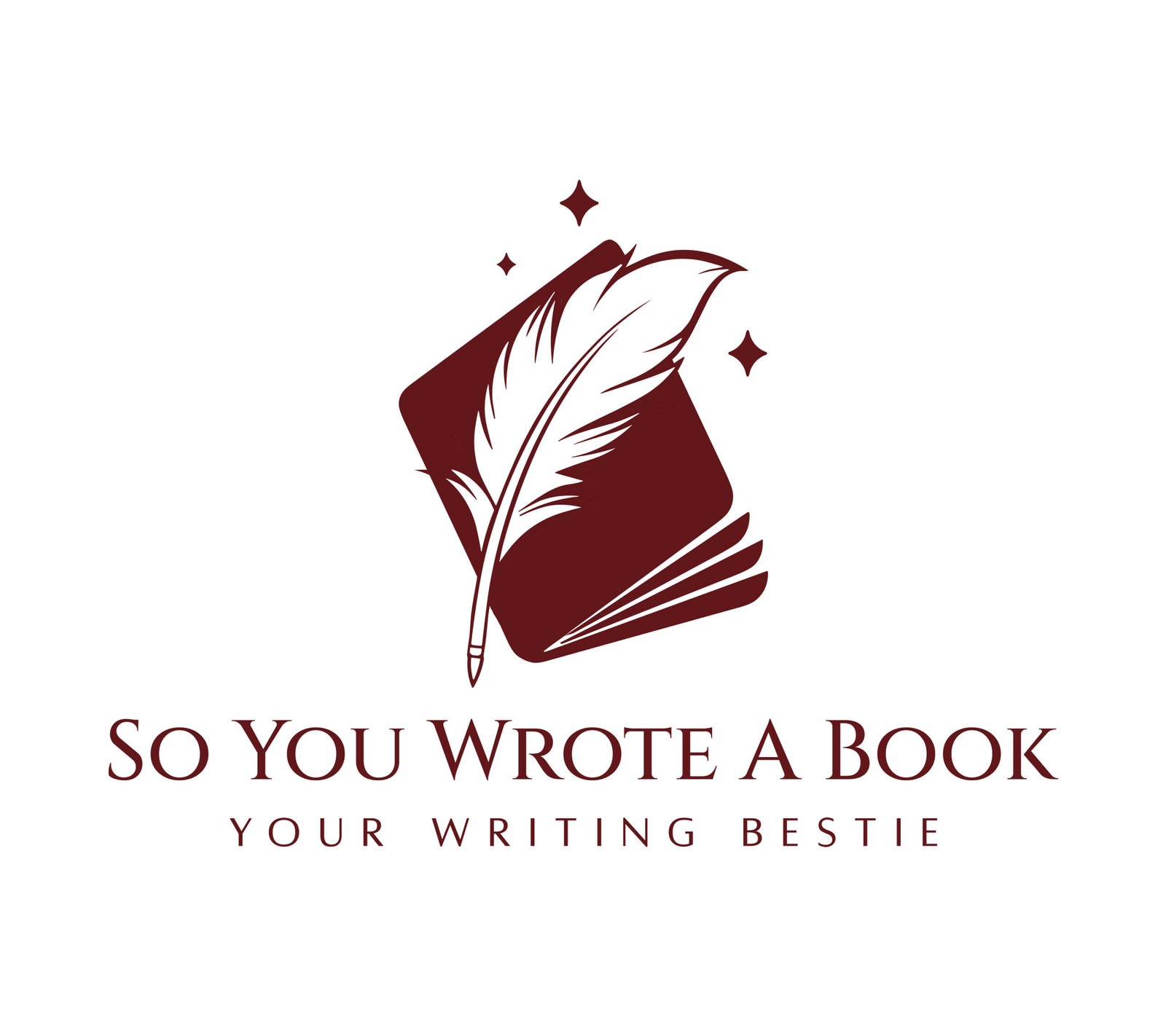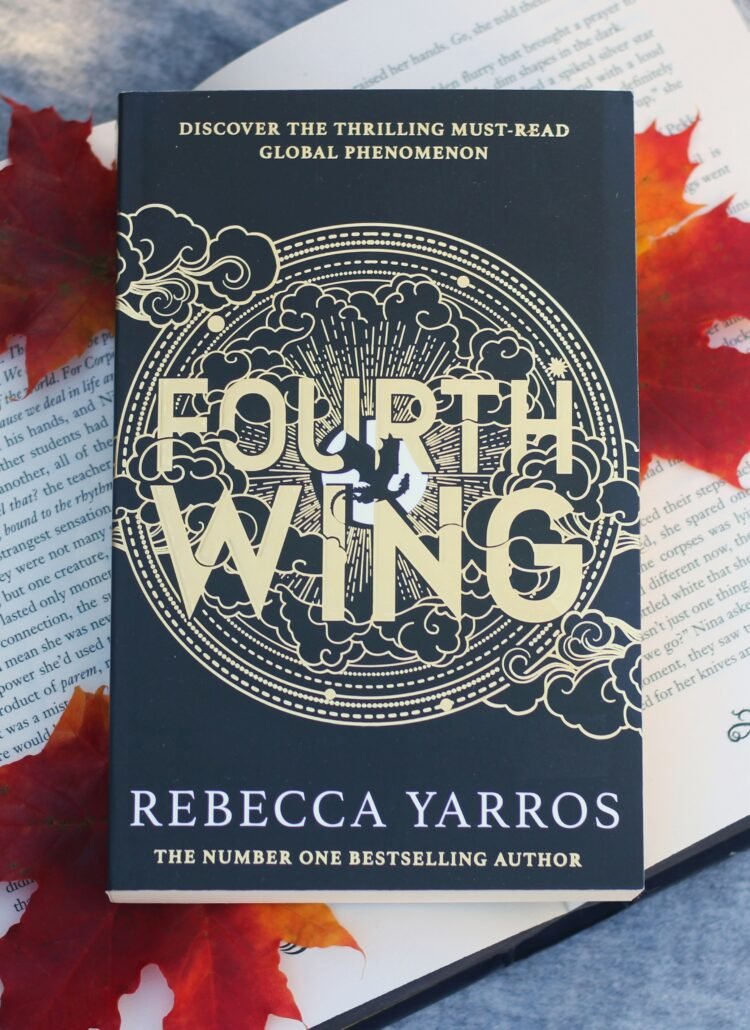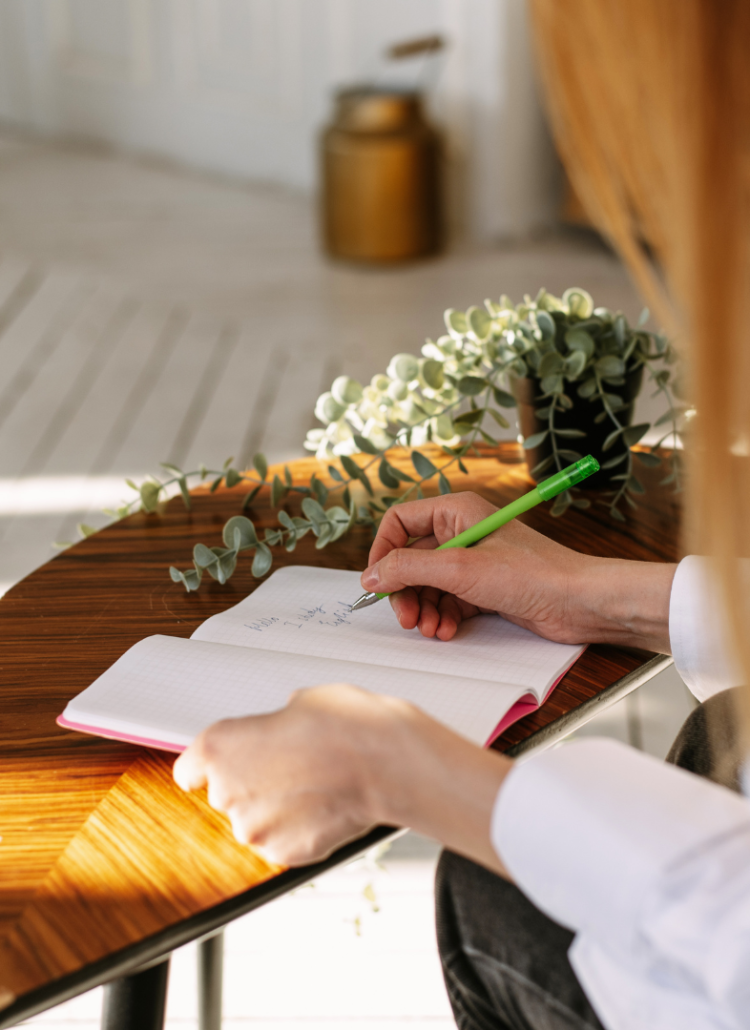If you’re writing a novel, you know how easy it is to get overwhelmed by the endless ideas, plot twists, character details, and the thousand other things you need to keep track of.
Not to mention the moments when inspiration strikes at the most inconvenient times, leaving you scrambling to jot down ideas on random scraps of paper or in half-forgotten phone notes.
If you’re like us, you probably have a phone app overflowing with notes, a stack of notebooks scattered around your desk, and way too many ideas bouncing around in your head with nowhere to organise them properly.
This is where Pinterest boards come in. They’re not just for mood boards and pretty pins (though those are fun too!). They’re the perfect way to collect, organise, and visually track all the little pieces of your story that make it come alive. From character aesthetics and setting references to thematic inspiration and plot arc visuals, Pinterest can be your ultimate creative toolbox.
Whether you’re just getting started with your novel or you’re deep in the drafting trenches, creating Pinterest boards can help you stay focused, find new ideas, and keep the excitement and momentum flowing.
Let’s dive into why Pinterest boards are super useful for novel writing and how you can start creating them today.
Please note: This guide assumes that you already have a basic understanding of using Pinterest.
What Exactly Is a Pinterest Board?
A Pinterest board is basically a collection of ‘pins’ (images, links, or videos) you save that are organised into specific folders (boards) so you can refer back to them. You create the board and then you get to choose what goes into it – whether it’s a picture of your character, a location that inspired your setting, a colour palette that captures the mood of your novel, or a quote that sums up your theme.
You can organise your boards in a way that works best for you. For example, you might have separate boards for:
- Characters: Pin images of people, places, or objects that reflect your characters’ personalities, looks, clothes, etc.
- Setting and World-Building: If you’re working on a fantasy or sci-fi novel, this board is perfect for all those places that make your world feel real – from landscapes to architecture.
- Scenes or Plot Inspiration: This board can house pins that reflect key moments or plot points in your story, whether it’s an image of an intense argument or a quiet moment between characters.
- Mood or Atmosphere: Need to capture the tone of your novel? This board is for images that evoke the emotional vibe of your story – think lighting or colours.
Pinterest also lets you create secret boards, which are perfect if you want to keep your ideas private or just need a little more time to refine things before sharing.
Here’s an example of the mood and atmosphere of Abbie’s recent novel.

Why Use Pinterest to Plot Your Novel?
At its core, Pinterest is all about visuals, and that’s one of the reasons it’s such a great tool for writers. You’re able to collect images, quotes, settings, character inspiration – basically anything that visually represents the mood, atmosphere, or vibe of your novel.
This helps you get clear on your story and keeps all the visual elements in one place so you can refer back to them at any time.
What’s great is that Pinterest makes it easy to see your novel in a way that your notes and outlines can’t. You might find that an image of a rainy street corner suddenly gives you a new perspective on your character’s internal struggle. Or a photo of a perfectly moody sunset sparks an entire scene. Or simply that you can see your characters, rather than have their assumed appearance floating somewhere around you brain.
When your novel’s inspiration is visual, it’s so much easier to connect with your ideas.
Here are a few ways you Pinterest boards can be good for writers.
See Your Characters
One of the biggest challenges in writing is getting your character descriptions just right. Sometimes words can fall short when it comes to capturing the full essence of a character’s appearance. Pinterest is a fantastic tool to pin images that closely represent how you envision your characters. It could be photos of people, animals, or even abstract images that reflect your character’s personality and vibe.
Maybe your protagonist has wild, curly hair and a carefree style – pin images of people with that same look. Or perhaps your antagonist has a sharp, calculating expression; you could find photos of people with intense, piercing eyes. By visualising what your characters look like, you’ll stay consistent with their appearances throughout the novel, which makes them feel more authentic and relatable. Plus, it’s a great reference for when you need to describe them in specific scenes!
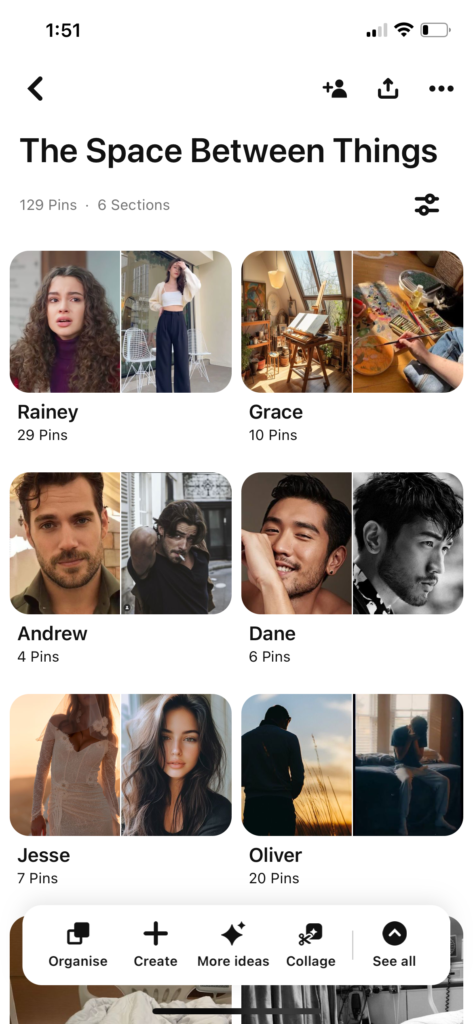
See Your Scenes and Plot
Sometimes, you can’t quite put a specific scene into words yet, but Pinterest can help you bring it to life with visuals. For example, if you’re working on a pivotal scene where your protagonist has a dramatic moment in the rain, search for images of rain-soaked streets, dramatic lighting, or characters in moments of emotional turmoil. This will not only inspire you but also keep your scenes feeling vivid and detailed. When you look back at these images, they’ll help trigger the emotions and descriptions you need to write those key moments.
You can also create separate boards for major plot points. For instance, if there’s a ‘first meeting’ scene between two characters, pin images that evoke the right kind of atmosphere, like an intimate setting or a bustling café. If your story has an action-packed chase scene, find pictures of high-speed pursuits, tense expressions, or cityscapes that help shape the backdrop of that action. By having these scenes visualised, you’re setting the mood for when you actually sit down to write.
See Historical References
If your novel is historical fiction or includes a period setting, Pinterest is a gold mine for visual research. You can pin photos from the era you’re writing about to get a feel for the architecture, fashion, and daily life of the time. This can be especially helpful for creating rich, authentic settings that transport your readers into a different world.
For example, if your novel takes place in the 1920s, you could pin photos of vintage cars, flapper dresses, and jazz clubs. These images will guide you in ensuring your descriptions of settings, clothing, and social norms are accurate and resonate with the time period. You can even pin famous historical figures or photographs from the era that inspire certain aspects of your characters or plot.
See The Clothing of Your Characters
Clothing is an often-overlooked detail in writing, but it’s crucial for building a character’s personality. Pinterest is perfect for gathering ideas about the kind of clothing your characters wear – whether it’s casual, formal, or unique to their personal style. This not only helps with character development but also paints a more detailed picture for your readers.
Let’s say your protagonist is a rebel with a laid-back style – search for images of leather jackets, boots, and vintage tees that match their vibe. If your character is an aristocrat, you can gather photos of elegant gowns, tailored suits, and fine accessories to bring their high-status life to life.
Pinterest allows you to see how different clothing items interact with different settings, personalities, and emotions, which will come in handy when writing those key scenes where what a character wears really matters.
With these visual boards, you’ll have a whole gallery of references to ensure consistency and depth across your novel, from your character’s appearance to the world they inhabit.
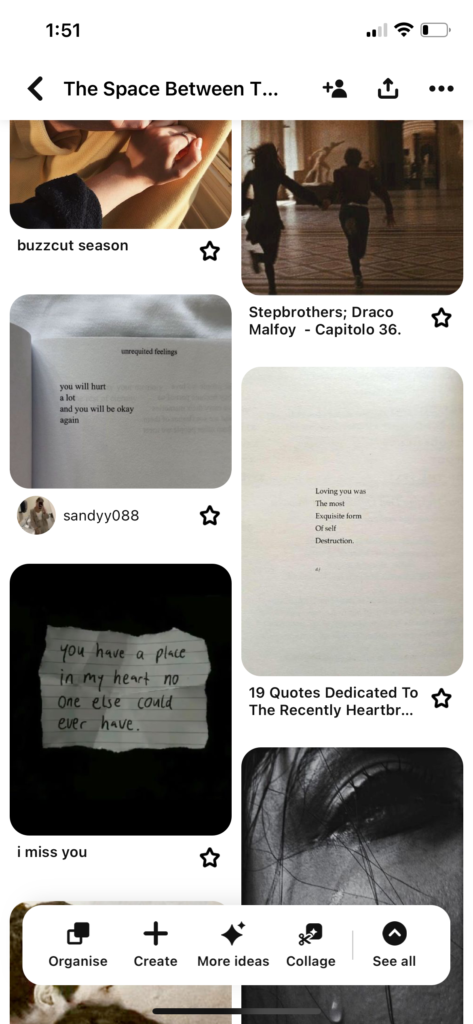
How to Create Pinterest Boards for Your Novel
Creating a Pinterest board is easy, but making one that helps you stay organised and inspired to write takes a little intention.
Here’s how you can get started:
Set Up Your Account and Boards
If you haven’t already, sign up for Pinterest.
Then, create your first board using the ‘+’ button (see below).
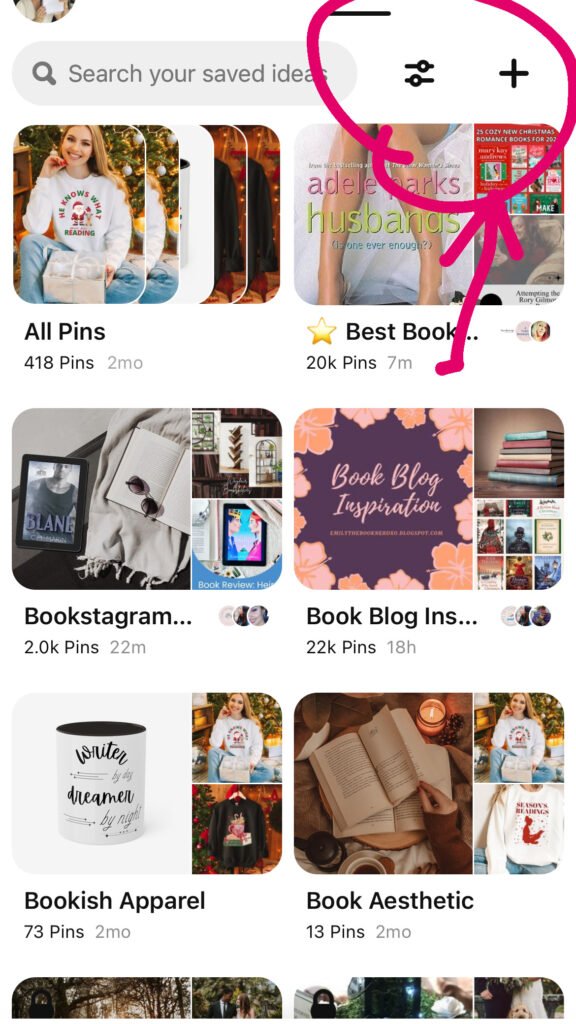

Name your board something specific to the board you are creating (eg. characters, settings, plot ideas, themes, or even specific scenes). You want to be able to find the board again when you need it.
Tip: Try and create boards for each individual thing in your novel. This will allow you to stay organised and easily locate the inspiration or references you need without sifting through an overwhelming mess of pins.
This way, when you’re brainstorming dialogue for a character or refining details about a setting, you can quickly pull up the relevant board and dive right into your creative flow.
How to Pin on Pinterest
Pinterest’s search function is surprisingly powerful. There is SO MUCH on the app, it’s actually insane! If you’re ever stuck or need some new inspiration, try searching for specific keywords to help narrow down your search and find exactly what you’re looking for. Here are some helpful keyword ideas to get you started:
1. Character Inspiration
For clothing, use specific keywords like ‘character fashion aesthetic,‘ ‘modern fantasy outfits,‘ ‘historical clothing styles‘ or something more specific like ‘pirate clothing in the 1700s‘ to discover visuals that align with how your character looks and feels.
For character profiles, use specific words like ‘character portrait,’ ‘girl in a white dress in Europe,’ ‘red haired fairy girl,‘ or ‘pretty girl with brown hair.’ These searches will bring up images of people, actors, drawings or AI.
2. Location and Setting Inspiration
For settings, think outside the box. For example: ‘dreamy landscape,’ ‘enchanted forest,’ or ‘vintage fantasy town.‘ You can also include time-period references like ‘Victorian street‘ or ‘medieval castle.’ Or try simple phrases like ‘fantasy magic’ or ‘sci-fi world’ or ‘romance book aesthetic.’
Hot tip: When searching for any images, include the genre you’re writing in to each phrase to make it more specific. For instance, add ‘fantasy’ or ‘sci-fi’ or ‘romance.’
3. Scene Inspiration
Here, you will pin illustrations or images representing pivotal plot moments, significant scenes, or important story beats. It’s a little hard to do if you haven’t already plotted your story, but it could also be a great way to get new ideas for the plot of your novel.
Using specific words like ‘romantic first meeting,’ ‘field surrounded by butterflies,’ or ‘dramatic confrontation with swords’ can lead you to visuals that match key moments in your story. These pins can be incredibly useful when you’re stuck on writing a pivotal scene, as seeing a visual representation of the moment can unlock new ideas.
There are millions upon millions of images on Pinterest, and many of them may help unlock new ideas for the plot of your story.
It will take you quite a while to find your plot in images, so take your time. Refill your coffee. Take lots of breaks.
When you think your plot is in there and good to go, arrange pins in a sequential order to create a storyboard for your plot.
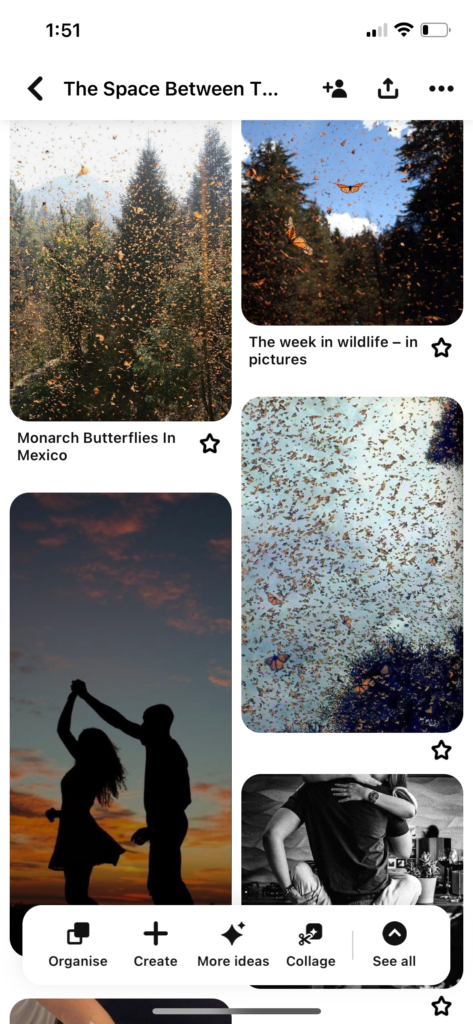
4. Mood and Atmosphere
The atmosphere is essential to capturing the right tone for your novel. Use mood-driven keywords like ‘dark and moody,’ ‘romantic,’ ‘mysterious,’ or ‘hopeful‘ tacked on to your other keywords.
5. Historical References
For novels where history, politics, mythology, etc., are relevant, Pinterest can be a great way to brainstorm and see things visually.
Try using terms like ‘1920s kitchenware,’ ‘medieval knight armour,’ ‘norse mythology beasts,’ or ‘Great Depression photos.’
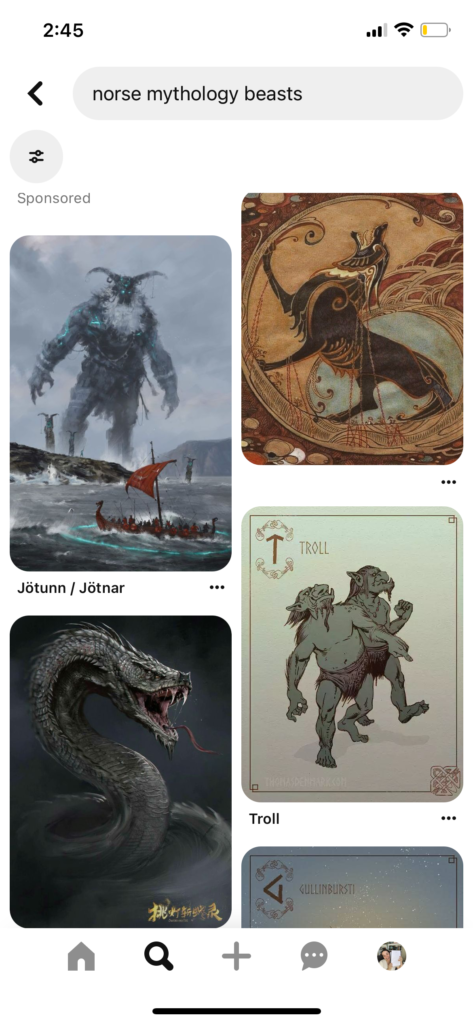
Stay Organised
The great thing about Pinterest is you can have multiple boards. Create different boards for each part of your novel: characters, settings, plot points, and even themes or emotions. This way, when you’re looking for inspiration, it’s all sorted and easy to find.
Tip: To join boards together, it’s better to create them all individually and then merge the boards together so that there are sub-boards within the broader board of your novel.
Like any part of the writing process, your Pinterest boards will evolve over time. As you write more, you might find that you need new sources of inspiration, or that a certain plot twist requires a new atmosphere. Checking in with your boards will help you keep your novel grounded in the world you’re building.

Just Pin It!
When you’re scrolling through all the options on Pinterest, pin what resonates with you.
Don’t overthink it!
If an image makes you feel something, add it. Even if it’s not perfect right now, it might help you later when you’re in a writing slump.
And most importantly, HAVE FUN DOING IT!
Happy pinning, Writer xx
